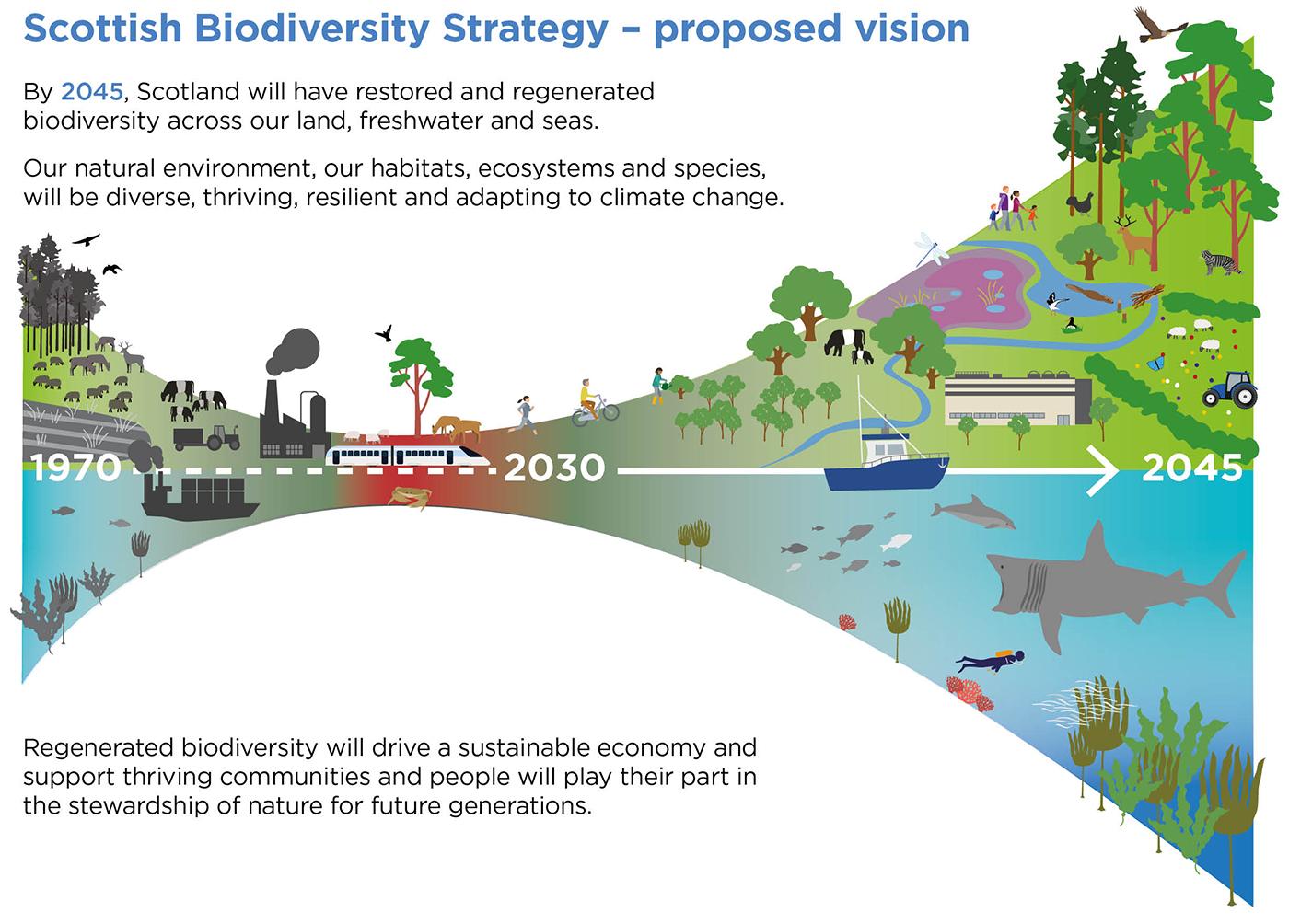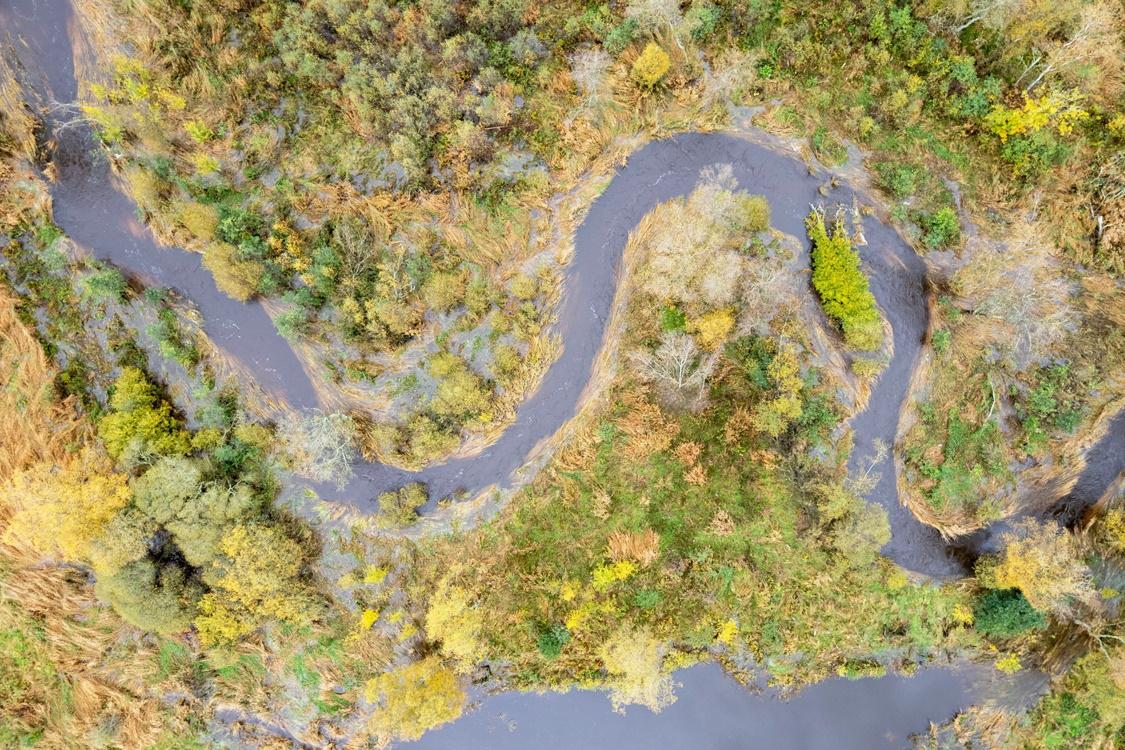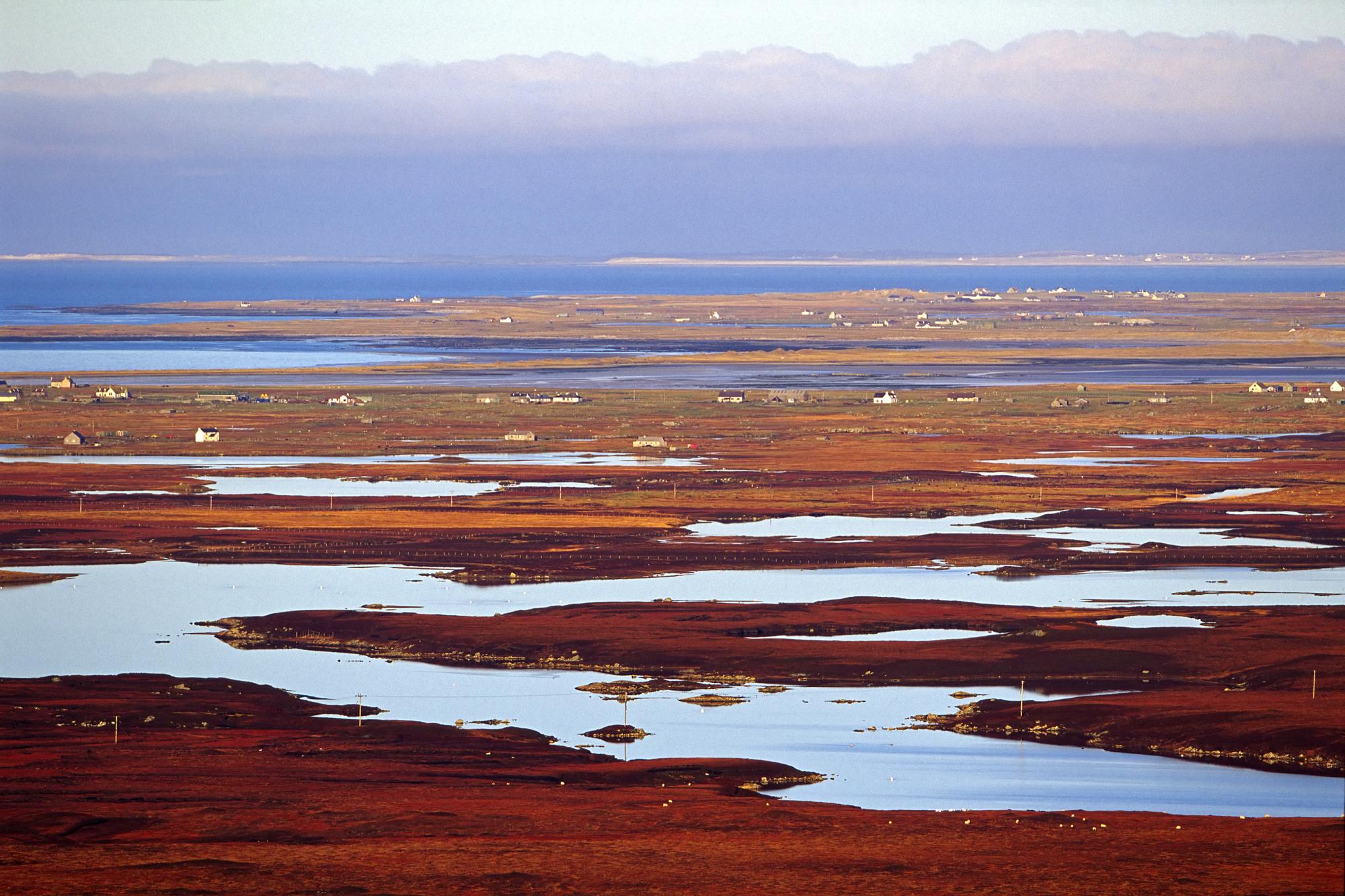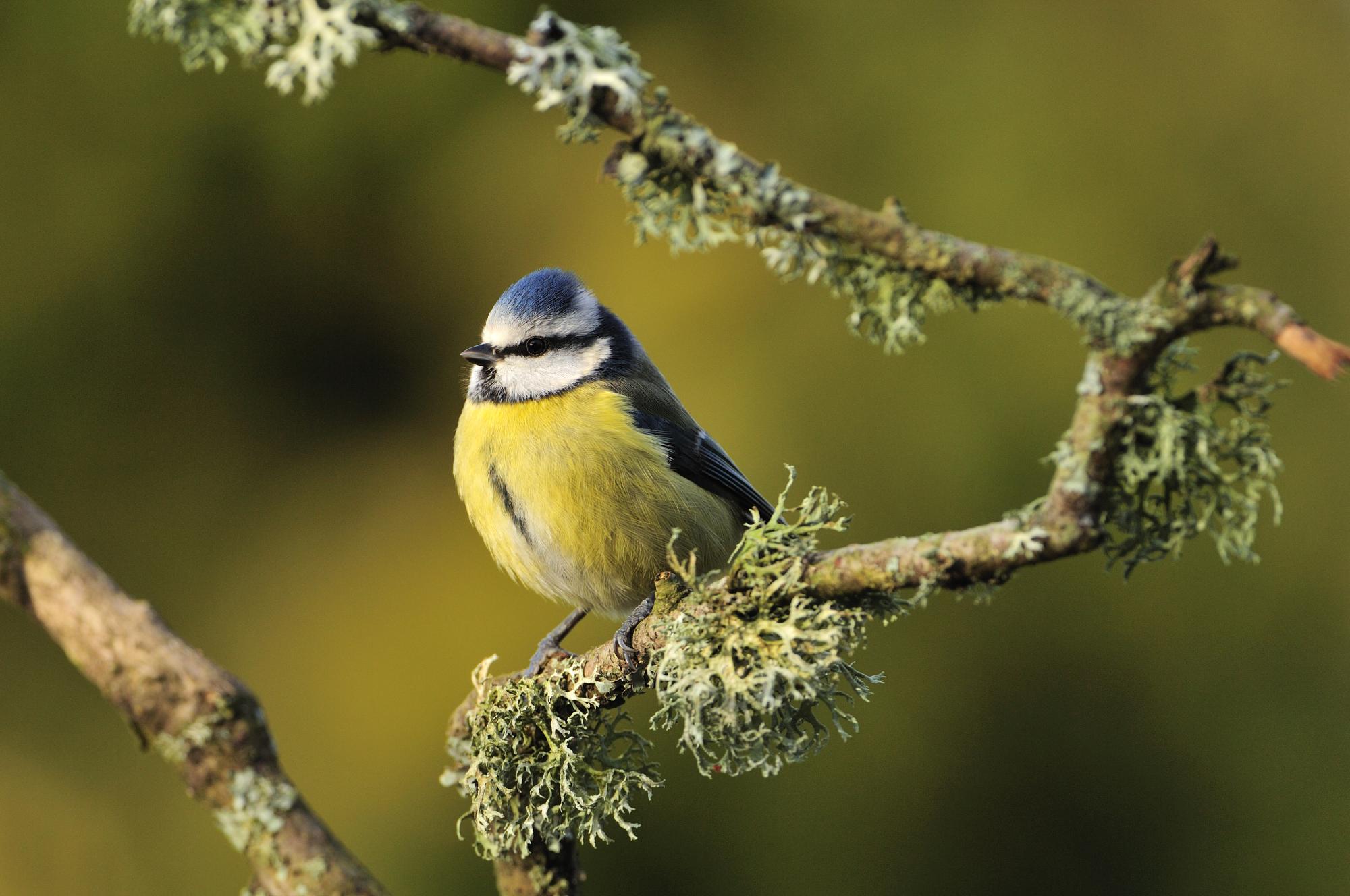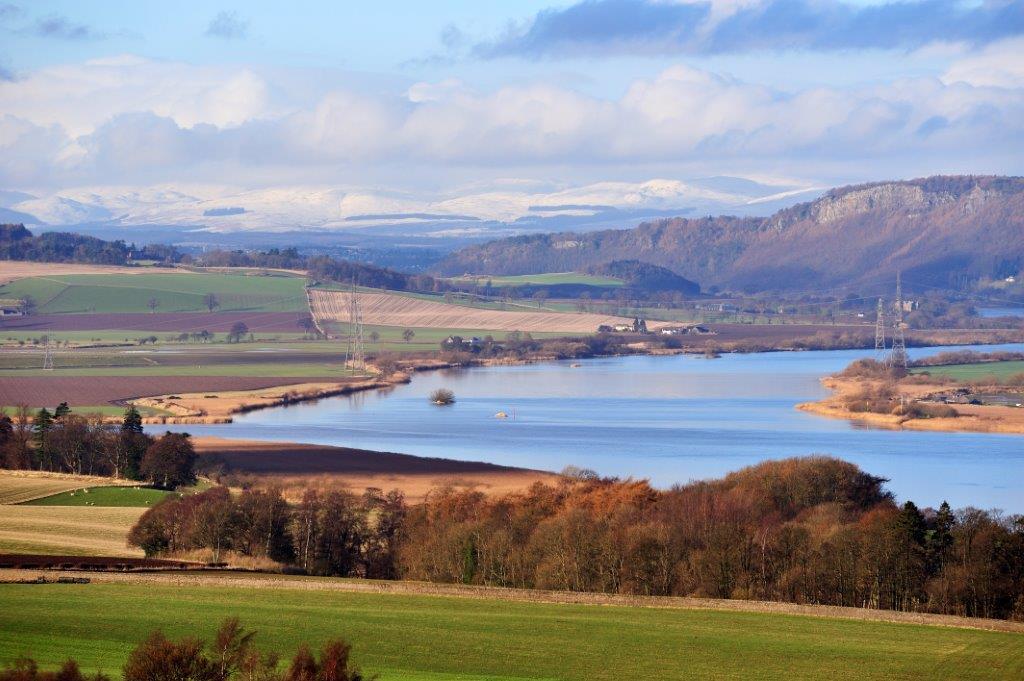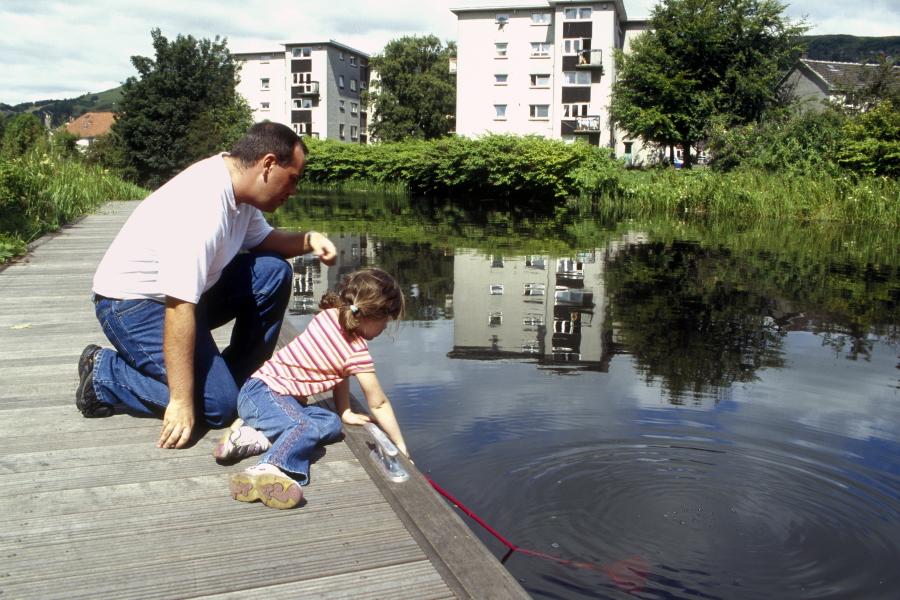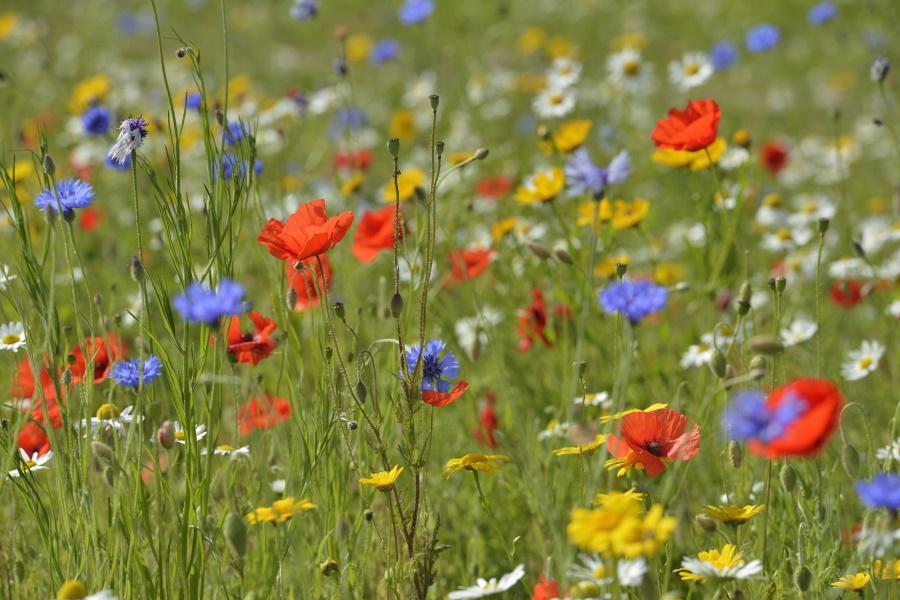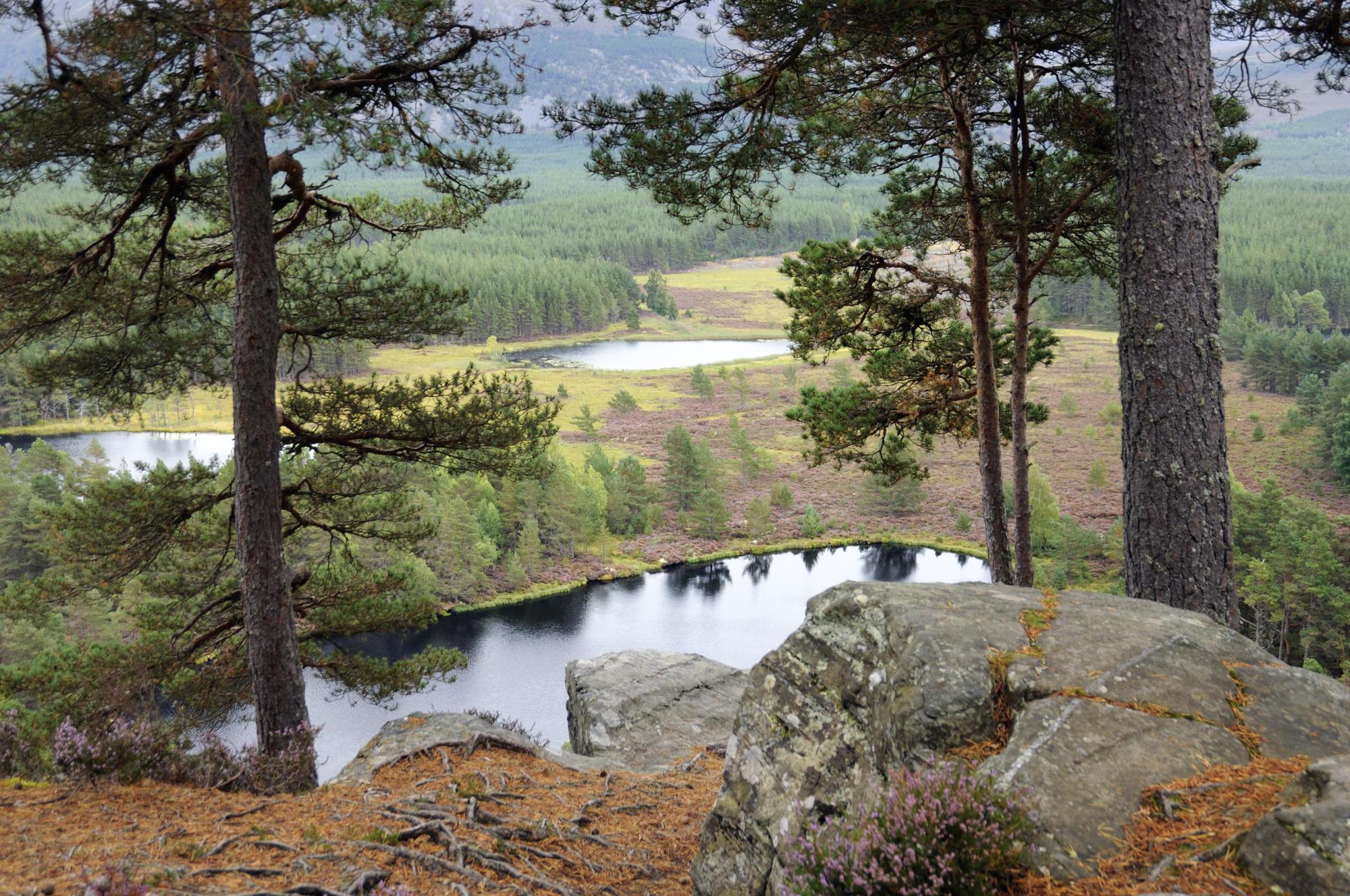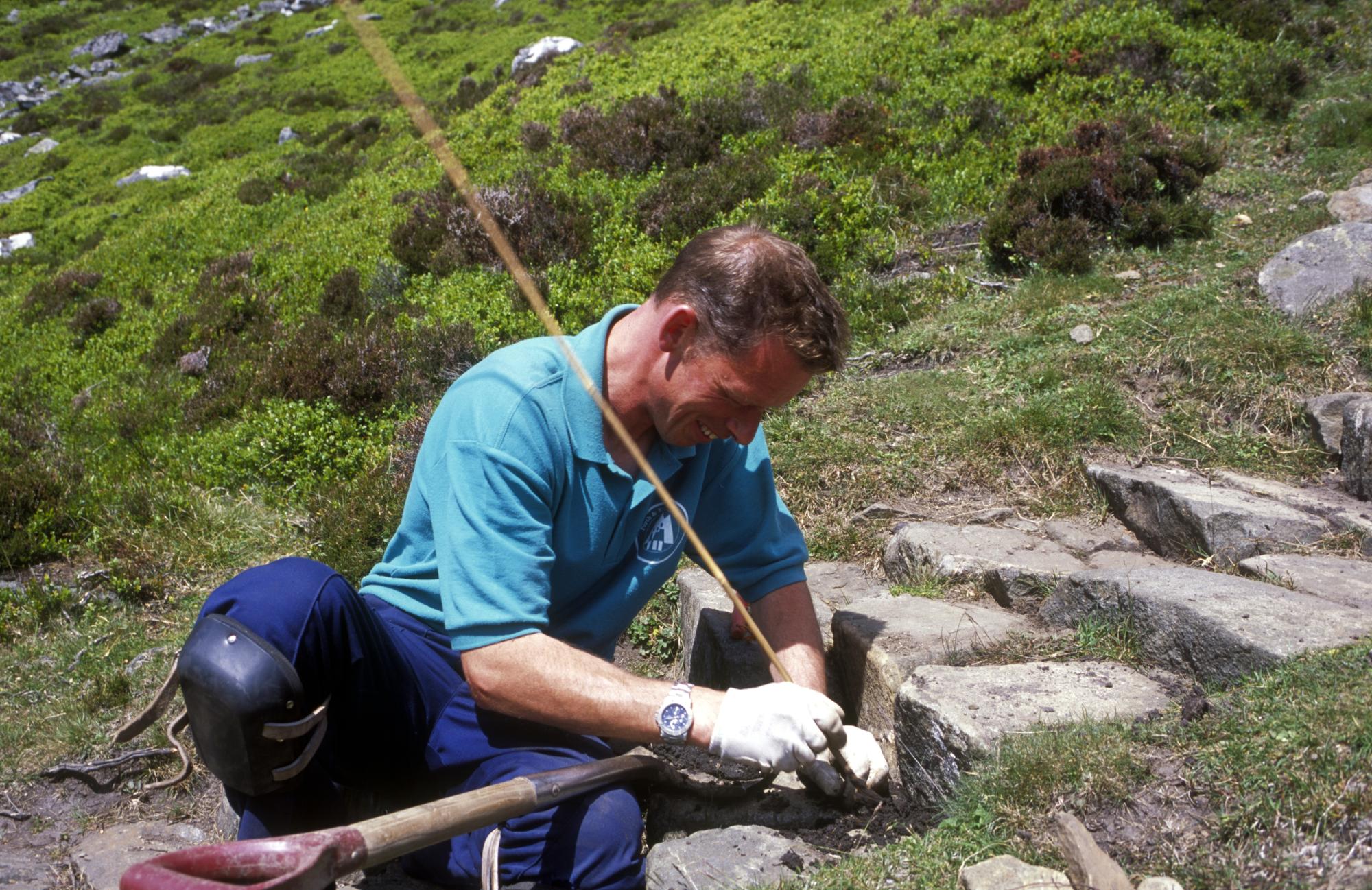Scotland's Biodiversity Strategy
Scotland faces an unprecedented nature-climate crisis. In light of mounting evidence that Scotland continues to experience dramatic declines in biodiversity, the Scottish Government has set out an ambitious new framework to halt biodiversity loss by 2030 and reverse it with large-scale restoration by 2045.
The consultation on the biodiversity framework and elements of the Natural Environment Bill was launched on 7 September. It is in two parts, Part A includes the final draft of the Scottish Biodiversity Strategy and a draft of the first five year delivery plan. Part B focusses on elements to be included in the Natural Environment Bill, specifically statutory targets for nature restoration and amendments to the aims, purpose, and functions of National Parks.
Together, these will deliver the transformational changes needed to protect and restore terrestrial, freshwater and marine biodiversity in Scotland.
The consultation seeks your views on both parts of the framework and is open for 14 weeks closing in mid-December. Please take the time to read the consultation and respond.
Scotland's Biodiversity Strategy - What is it?
The original strategy – Scotland’s Biodiversity: It’s in Your Hands – was published in 2004. In 2013, it was supplemented by the 2020 Challenge for Scotland’s Biodiversity. The two documents together constituted the Scottish Biodiversity Strategy. The 2020 Challenge for Scotland’s Biodiversity set out the major steps needed to improve the state of nature in Scotland. The work needed to deliver this is, however, complex and challenging.
In December 2020 the Scottish Government published the Scottish Biodiversity Strategy Post-2020: A Statement of Intent. This paved the way for the new, ambitious 25-year strategy which will supersede the 2020 Challenge strategy.
View these document here;
You may also be interested in
Infographic description
The 'Proposed vision' infographic shows a timeline from 1970 to 2045 depicting biodiversity (examples of flora and fauna) declining and then regenerating by 2045. Its starts with images of how land and sea was used in the 1970s, such as farming, a factory and a fishing trawler. As the timeline progresses its shows a decline in biodiversity and then portrays the decline ending by around 2030. From 2030 to 2045, the image shows how land and sea might be used as biodiversity is substantially restored.
The image includes the draft Scottish Biodiversity Strategy vision text, stating:
By 2045, Scotland will have restored and regenerated biodiversity across our land, freshwater and seas.
Our natural environment, our habitats, ecosystems and species, will be diverse, thriving, resilient and adapting to climate change.
Regenerated biodiversity will drive a sustainable economy and support thriving communities and people will play their part in the stewardship of nature for future generations.
